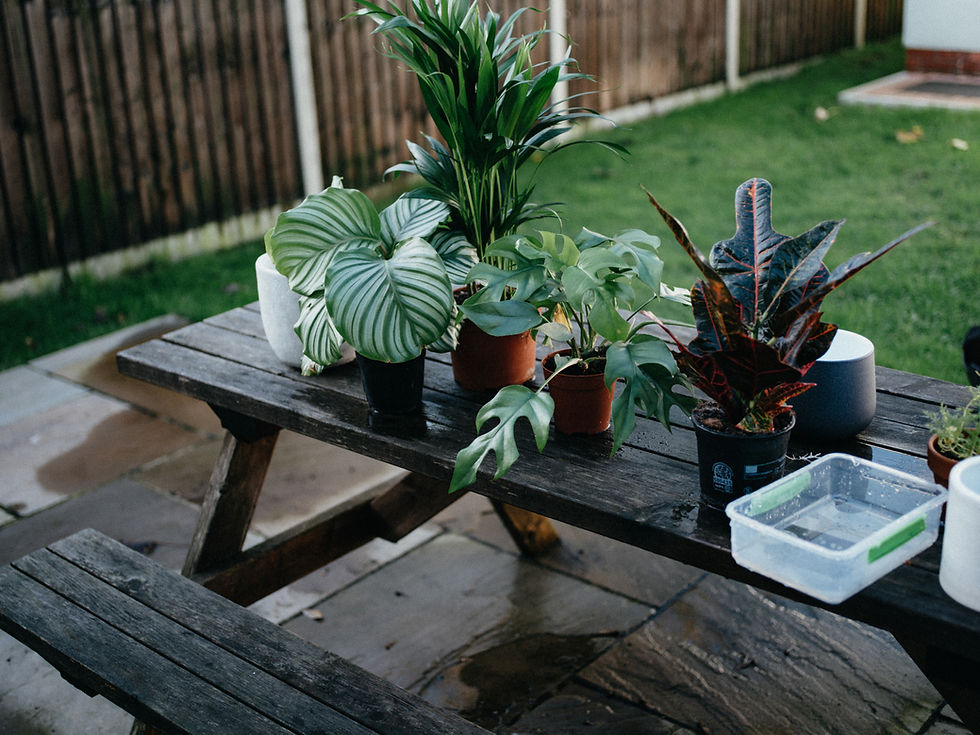Sun’s Out, Plants Out: When (and How) to Move Your Houseplants Outside for Summer
- Erin Johnson

- May 27
- 2 min read
If you’re itching to fling open the windows and soak up some sunshine, guess what? Your houseplants are feeling it too. After months cooped up inside, they’re dreaming of fresh air, warm breezes, and a serious glow-up under that big bright thing in the sky. But before you move your plants outside for the summer, there are a few things you’ll want to keep in mind to make sure your leafy pals stay happy and healthy.

When Can I Move My Plants Outside for the Summer?
First rule: no frost, no problem. Wait until nighttime temps stay consistently above 55°F (13°C). Any colder, and your tropical-loving friends might throw a fit (or worse, get damaged). For most places, that’s late May or early June—but check your local weather to be sure.
Pro tip: Some plants, like calatheas and monsteras, prefer it even toastier—think 60s or warmer at night.
Ease Them Into It: The Acclimation Process
Plants can get sunburned too (and no, they don’t make SPF for pothos), so don’t plop them into full sun right away. Here’s the slow-and-steady method:
Start in the shade for a few hours a day—porches, patios, or under trees are great spots.
Gradually increase their time outside over 7 to 10 days.
Move them into brighter light only if they can handle it (succulents = yes, ferns = probably not).
Bring them in at night for the first few days, just to be safe.
If leaves start looking crispy or bleached, they’re getting too much sun too fast. Dial it back and let them chill in the shade for a while.
Things to Watch For
Pests. Outdoor life means bugs. Check under leaves for stowaways like aphids or spider mites. A little rinse or insecticidal soap goes a long way.
Wind. Secure your pots somewhere sheltered. One good gust and your ficus could end up doing somersaults.
Thirsty roots. Outdoor air dries soil faster. You’ll probably need to water more often—maybe even daily in hot spells.
Drainage matters. Make sure your pots have drainage holes. Summer storms and soggy bottoms don’t mix.
Feed Me, Seymour!
With all that fresh air and sunlight, your plants will start growing like crazy. Help them out with a diluted liquid fertilizer every 2 to 4 weeks—but don’t overdo it. More is not always better.
When to Bring ’Em Back In
Once fall rolls around and the nights start dipping below 55°F again, it’s time to head back inside. But just like the trip out, re-entry should be gradual. Ease them back into indoor light, and check thoroughly for pests before they cross the threshold.
Final Thoughts
Taking your houseplants on a summer vacation outdoors can do wonders—bigger leaves, faster growth, happier vibes. Just remember: it’s all about timing, gentle transitions, and a little plant-parent TLC.
Now grab your watering can, find a shady spot, and let your plant babies soak up the season. They’ve earned it.






Comments